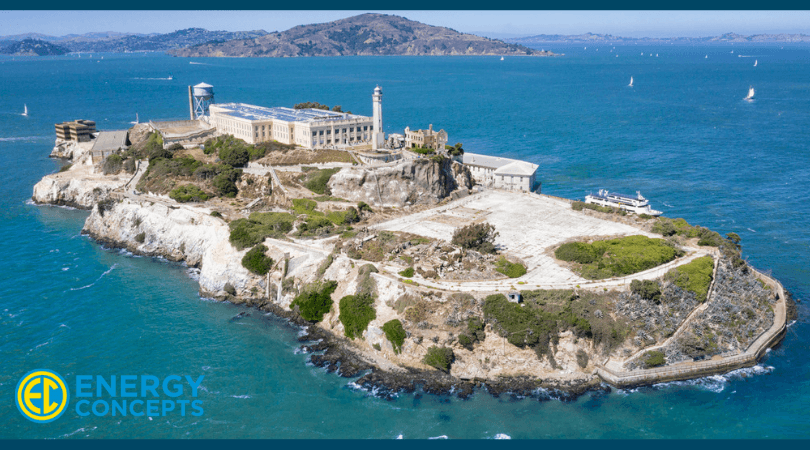Alcatraz Island’s Journey to Solar Power

Did you know that Alcatraz Island is home to one of the nation’s largest microgrids? The island is equipped with a 305-kilowatt solar array that sits on top of the main building to keep it hidden from view and preserve its integrity.
One of the biggest reasons Alcatraz Island’s prison closed in 1963 was because of power. The island is completely cut off from the mainland with no access to their power lines and therefore had to rely on 2,000 gallons of diesel fuel being shipped to the island every week. This significant use of diesel fuel led to incredibly high operational costs and high pollution risk.
How is it helping?
According to a report from the Federal Energy Management Program, after the first two years of operation, the solar panels generated 45% of the islands energy use. The initial amount of energy that the panels were supposed to generate was around 60%, and while this is not the amount that was initially predicted, it is still saving Alcatraz and the residents of San Francisco a lot of money.
What obstacles has Alcatraz faced?
Alcatraz has run into many problems along the way, first with preservationists who believed the addition of solar panels would detract from the authenticity and historical integrity of the landmark. Then, they encountered an unexpected problem. Birds.
With most solar panel models, there is minimal maintenance involved aside from a quick cleaning once a year, but when the panels are located on a nesting ground for thousands of seagulls, there’s a bit more to keep clean.
Most of these gulls build their nests under the panels, but as they come and go, they leave thousands of droppings on top of the panels, making it more difficult for the panels to generate energy.
No matter the obstacles faced by Alcatraz Island and their solar panels, they represent a significant advancement in solar energy and technology.
